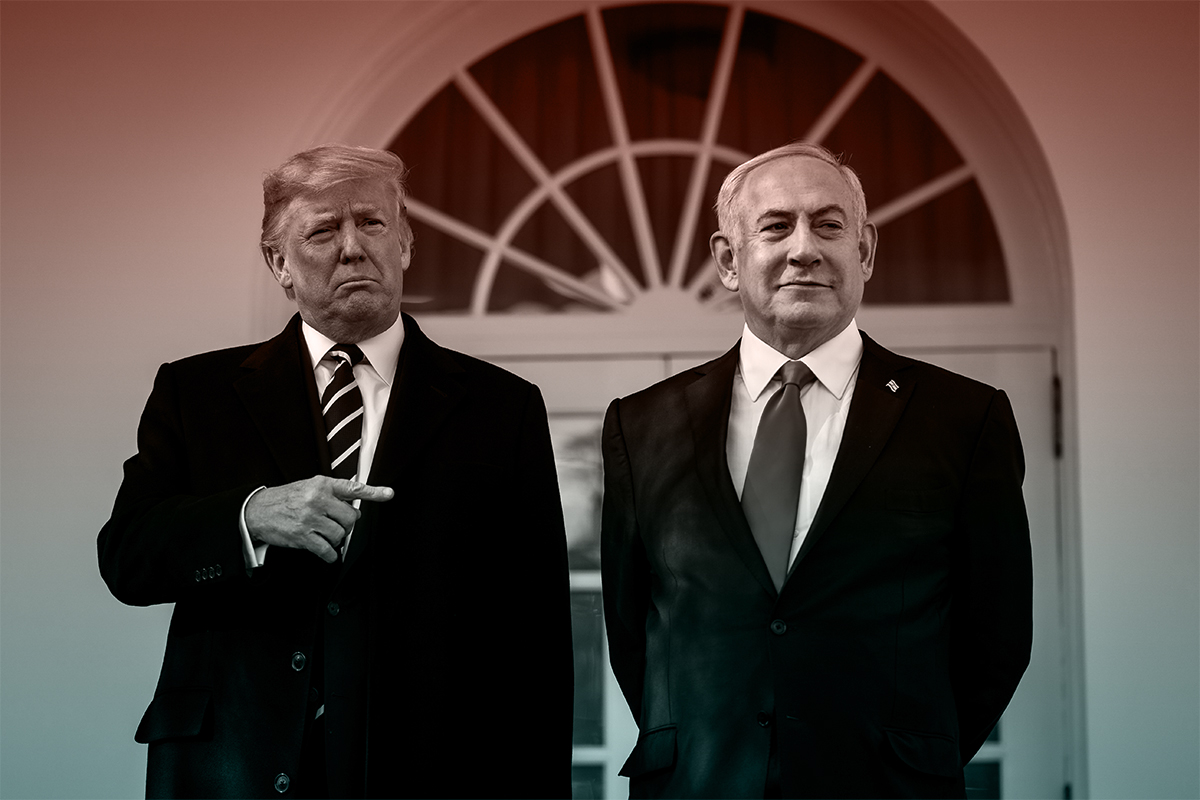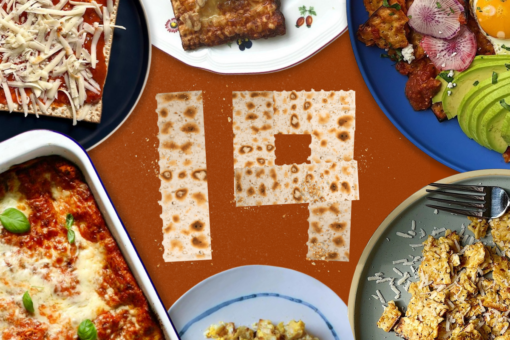On Tuesday, January 28, the Trump Administration released their Israeli-Palestinian peace proposal, a 181-page document titled “Peace to Prosperity: A Vision to Improve the Lives of the Palestinian and Israeli People.” (You can read it all here, if you’re so inclined.) The U.S. has long had a major role in trying to solve the Israeli-Palestinian conflict. Basically all U.S. presidents have attempted to bring peace to the Middle East; Trump is not the first, and likely not the last.
There’s a lot to digest from the plan, and many people are pointing out the fact that it was drafted with no input from Palestinian leaders, and ignores most — if not all — of their desires.
As we’ve outlined before, the devil is in the details when it comes to a two-state solution — which the majority of world leaders generally support — with the main issues falling around four key issues: (1) Borders, (2) Jerusalem, (3) Security, and (4) Refugees. As a way of making this as clear as possible, we’re going to stick to those four issues and see how the Trump Plan (er, the Kushner Plan? He read 25 books for it!) addresses them.
Shall we dive in?
Wait, before we start: Does this plan actually propose a two-state solution?
Good catch! No, not really. While many are calling this a “two-state solution,” it’s not quite. But it’s not really a “one-state solution” either.
[READ MORE: What are previous proposed solutions?]
U.S. Ambassador David Friedman explained in a phone call with reporters following the announcement that Israel would retain security control over all the land that would include a future Palestinian state. Israeli forces would still be allowed to patrol “from the Jordan River to the Mediterranean Sea.” Which, uh, isn’t sovereignty for Palestinians.
And, Israeli Prime Minister Netaynahu won’t always use the term “state” to refer to Palestine. His preferred term? “Conditional and limited recognition.”
So, what *does* it say about a Palestinian state?
Basically, the plan is a path towards a state in four years.
The state, the plan outlines, will exist if (a) the Palestinians accept the plan, (b) the Palestinian Authority “terminate[s] the paying of salaries to terrorists” and to families of deceased terrorists, (c) Hamas and Islamic Jihad are dismantled, (d) Gaza is demilitarized, (e) the Palestinian Authority takes full control of Gaza.
The Palestinian Authority hasn’t had a presence in Gaza since 2006.
[READ MORE: How do Palestinian politics work?]
It also says a future Palestinian state wouldn’t be allowed to form a true military. The document reads: “The State of Palestine will not have the right to forge military, intelligence or security agreements with any state or organization that adversely affect the State of Israel’s security, as determined by the State of Israel. The State of Palestine will not be able to develop military or paramilitary capabilities inside or outside of the State of Palestine.” Why? According to the document, “A realistic solution would give the Palestinians all the power to govern themselves but not the powers to threaten Israel.”
FWIW: Palestinian President Mahmoud Abbas said “a thousand no’s” to the new plan. The full quote? “After the nonsense that we heard today we say a thousand no’s to the Deal of The Century.”
What are the proposed borders of the plan?
They actually provided two maps, which they called “conceptual maps.” On the left is “the State of Israel,” and on the right is “a Future State of Palestine”:

On the left, you can see numbers in the area shaded for Palestine. Those numbers? “Israeli Enclave Communities,” AKA settlements, a list that is “not all inclusive.” Estimates say that in this plan, Israel will retain about 20% of the West Bank. Ilan Goldenberg, Middle East Security Director at The Center for a New American Security, stated on Twitter that the map is an oversimplification, and the “swapped lands” given to the Palestinians is “a bunch of desert entirely disconnected from the rest of their state.”
6. Also, the swap areas they are giving the Palestinians is a bunch of desert entirely disconnected from the rest of their state while taking prime real estate in the middle of the West Bank
— Ilan Goldenberg (@ilangoldenberg) January 28, 2020
Netanyahu is now bringing a vote on annexing all Israeli settlements, saying that Israel wants to “apply its laws” to existing settlements. (He never actually said the word “annex,” but that is exactly what he is planning on doing.)
[READ MORE: What are the settlements?]
Here’s more analysis of the maps.
What about Jerusalem ?
Well, Trump contradicted himself. He said Jerusalem will be Israel’s “undivided capital,” but the capital of Palestine would be “in eastern Jerusalem,” which means he is actually proposing to divide Jerusalem.
According to one analysis, the Palestinian capital in East Jerusalem will be outside of the Israeli security barrier, but within Jerusalem’s municipal boundaries.
Here’s the text: “This physical barrier should remain in place and should serve as a border between the capitals of the two parties. Jerusalem will remain the sovereign capital of the State of Israel, and it should remain an undivided city. The sovereign capital of the State of Palestine should be in the section of East Jerusalem located in all areas east and north of the existing security barrier, including Kafr Aqab, the eastern part of Shuafat and Abu Dis, and could be named Al Quds or another name as determined by the State of Palestine.”
Psst: Al Quds is the Arabic name for Jerusalem.
What about the Temple Mount?
Quick refresher: The Temple Mount is the holiest site in Judaism, and the third holiest in Islam (after Mecca and Medina).
The peace plan’s authors say “the status quo at the Temple Mount/Haram al-Sharif should continue uninterrupted.” But, they say, “people of every faith should be permitted to pray.” Which is… not the current status quo. Currently, Jews are not allowed to pray on the Temple Mount, and have been arrested for doing so.
Jordan, which currently controls the Jerusalem Islamic Waqf — the organization that oversees the Temple Mount — put out a statement reacting to this: “The Awqaf and Islamic Affairs Ministry cautions against the imposition of a ‘new reality’ at the blessed Al-Aqsa Mosque,” they said. “Non-Muslims have no right in the Al-Aqsa Mosque.”
What about refugees?
The Right of Return has typically been one of the most contested issues in a peace plan, and most discussions have included, at least, a symbolic number.
The new plan explicitly states there will be no right of return: “The Israeli-Palestinian Peace Agreement shall provide for a complete end and release of any and all claims relating to refugee or immigration status. There shall be no right of return by, or absorption of, any Palestinian refugee into the State of Israel.”
Their solution instead?
- Absorption into the State of Palestine
- Local integration in current host countries
- The acceptance of 5,000 refugees each year, for up to 10 years, in individual Organization of Islamic Cooperation member countries
Which means no Palestinian refugees returning to Israel, and sort of pushes the problem of refugees onto other countries.
And the security issues?
Well, as we outlined, the plan says Israel will control the Jordan Valley; have absolute security control over a future Palestinian state, a permanent occupation; Palestine would be demilitarized; Hamas wouldn’t exist.
What comes next?
Well, there’s a third (!) election coming up in Israel in March. (There were two last year, both of which failed to produce a coalition and choose a Prime Minister.)
[READ MORE: How do Israeli politics work?]
Oh yeah, there’s also a Presidential election in the U.S. later this year, and most of the Democratic candidates have come out against this plan. Here are statements from Pete Buttigieg, Joe Biden, Elizabeth Warren, and Mike Bloomberg. Bernie Sanders’s Senate office released a statement over e-mail. And Amy Klobuchar didn’t make her own statement, but signed onto a letter from Congressional Democrats condemning the plan (which Sanders and Warren also signed).
Plus, the Palestinians have completely rejected it, and protests have broken out across the West Bank and Gaza.
The Israeli-Palestinian conflict is confusing. We made a guide to help you understand it.
Header Image: President Donald Trump talks with Israeli Prime Minister Benjamin Netanyahu near the Oval Office at the White House, Jan 27, 2020, by Jabin Botsford/The Washington Post via Getty Images.



